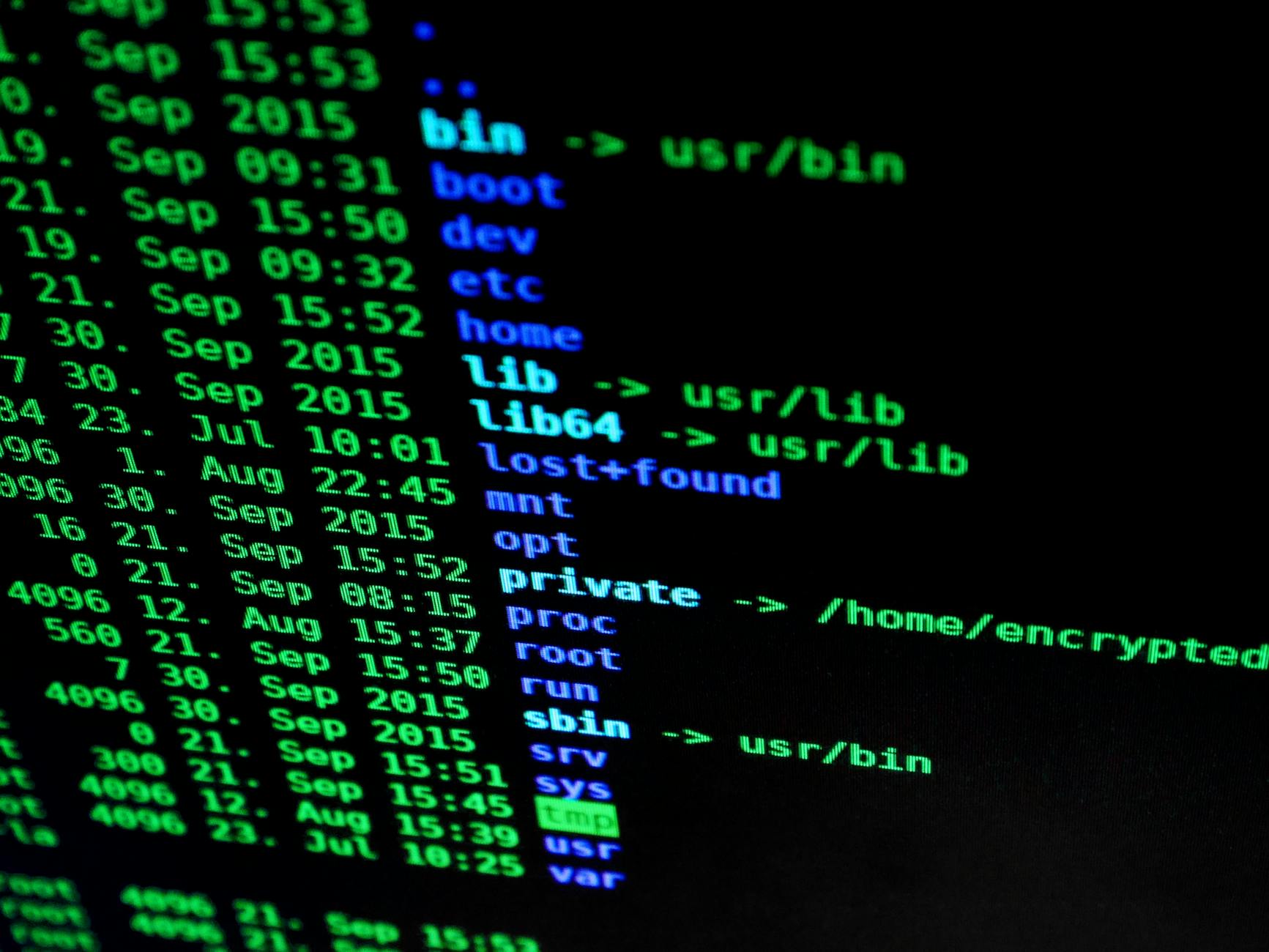Navigating the Future of Cybersecurity: Rising Threats, Cutting-Edge Defenses, and Emerging Tech Trends
Cybersec rity Trends

🚨 Attention, digital citizens! In an era where our lives are increasingly intertwined with technology, a new breed of threats lurks in the shadows of our interconnected world. Cybercrime is evolving at an alarming rate, leaving individuals and businesses vulnerable to devastating attacks. But fear not – the cybersecurity landscape is rapidly adapting to meet these challenges head-on.
From sophisticated AI-powered defense systems to groundbreaking innovations in cloud security, the battle against cyber threats is intensifying. As we navigate this digital minefield, questions arise: How can we protect our sensitive data? What emerging technologies pose new security risks? And most importantly, how can we stay one step ahead of cybercriminals?
In this blog post, we'll dive deep into the cutting-edge trends shaping cybersecurity in 2023 and beyond. We'll explore the rising threats in our digital landscape, uncover advanced defense mechanisms, and examine the critical importance of privacy and data protection. Additionally, we'll shed light on cloud security innovations and the security implications of emerging technologies. Buckle up as we embark on a journey through the fascinating world of cybersecurity! 🛡️💻

Rising Threats in the Digital Landscape
As the digital landscape continues to evolve, so do the threats that organizations face. Let's explore some of the most significant cybersecurity challenges emerging in recent years.
A. Ransomware Evolution
Ransomware attacks have become increasingly sophisticated, targeting not only individual devices but entire networks. Attackers now employ double extortion tactics, threatening to leak sensitive data if ransom demands are not met.
-
Traditional ransomware: Encrypts files and demands payment for decryption
-
Double extortion: Combines encryption with data theft and leak threats
-
Ransomware-as-a-Service (RaaS): Allows less skilled criminals to launch attacks
B. AI-Powered Attacks
Artificial Intelligence is being weaponized by cybercriminals to create more effective and harder-to-detect attacks.
| AI-Powered Attack Type | Description | Impact |
|---|---|---|
| Deepfakes | Realistic fake audio/video content | Social engineering, fraud |
| Smart phishing | Personalized, context-aware phishing attempts | Higher success rates |
| Adaptive malware | Self-modifying code to evade detection | Prolonged infections |
C. IoT Vulnerabilities
The proliferation of Internet of Things (IoT) devices has expanded the attack surface for cybercriminals.
-
Weak default credentials
-
Lack of regular security updates
-
Insecure communication protocols
-
Limited processing power for robust security measures
D. Supply Chain Compromises
Attackers are increasingly targeting the software supply chain to compromise multiple organizations simultaneously.
Recent high-profile supply chain attacks have demonstrated the far-reaching consequences of these threats, affecting thousands of downstream customers and causing widespread disruption.
With these rising threats in mind, it's crucial to understand the advanced defense mechanisms organizations are developing to combat them.

Advanced Defense Mechanisms
As cyber threats continue to evolve, organizations are adopting more sophisticated defense mechanisms to protect their digital assets. Let's explore some of the cutting-edge approaches in cybersecurity.
Zero Trust Architecture
Zero Trust Architecture (ZTA) is revolutionizing the way organizations approach security. This model operates on the principle of "never trust, always verify," regardless of whether the user is inside or outside the network perimeter.
Key components of Zero Trust Architecture:
-
Continuous authentication and authorization
-
Micro-segmentation of networks
-
Least privilege access
-
Real-time monitoring and analytics
| Traditional Security | Zero Trust Security |
|---|---|
| Trust by default | No implicit trust |
| Perimeter-based | Identity-based |
| Static access rules | Dynamic access rules |
| Reactive approach | Proactive approach |
AI and Machine Learning in Cybersecurity
Artificial Intelligence (AI) and Machine Learning (ML) are powerful tools in the fight against cyber threats. These technologies enable more efficient threat detection, faster response times, and improved predictive capabilities.
Benefits of AI and ML in cybersecurity:
-
Anomaly detection in network traffic
-
Automated threat intelligence gathering
-
Behavioral analysis for insider threat detection
-
Adaptive security policies
Automated Threat Detection and Response
Automation is key to keeping pace with the ever-increasing volume and sophistication of cyber attacks. Automated threat detection and response systems can identify and mitigate threats in real-time, significantly reducing the potential impact of a breach.
Components of automated threat detection and response:
-
Security Information and Event Management (SIEM) systems
-
Security Orchestration, Automation, and Response (SOAR) platforms
-
Endpoint Detection and Response (EDR) tools
-
Network Traffic Analysis (NTA) solutions
By leveraging these advanced defense mechanisms, organizations can significantly enhance their cybersecurity posture and stay ahead of emerging threats. Next, we'll explore the critical aspects of privacy and data protection in the digital age.

Privacy and Data Protection
As we delve deeper into cybersecurity trends, it's crucial to examine the evolving landscape of privacy and data protection. With the increasing importance of personal information in our digital world, organizations and individuals alike must prioritize safeguarding sensitive data.
GDPR and Global Regulations
The General Data Protection Regulation (GDPR) has set a new standard for data privacy laws worldwide. Its implementation has sparked a global trend of similar regulations, forcing organizations to reassess their data handling practices.
| Regulation | Region | Key Focus |
|---|---|---|
| GDPR | European Union | Data protection and privacy |
| CCPA | California, USA | Consumer rights and business obligations |
| LGPD | Brazil | Personal data processing |
Data Encryption Advancements
Recent advancements in encryption technologies have significantly bolstered data protection efforts:
-
Homomorphic encryption
-
Quantum-resistant encryption
-
End-to-end encryption for messaging apps
Privacy-Enhancing Technologies
Innovative privacy-enhancing technologies (PETs) are emerging to help organizations protect user data while still deriving value from it:
-
Differential privacy
-
Federated learning
-
Zero-knowledge proofs
Data Minimization Strategies
Organizations are adopting data minimization strategies to reduce their risk exposure:
-
Implementing strict data retention policies
-
Employing data anonymization techniques
-
Conducting regular data audits
As we move forward, the next section will explore how these privacy and data protection measures are being applied in the rapidly evolving realm of cloud security.

Cloud Security Innovations
As organizations continue to embrace cloud computing, the need for robust security measures has never been more critical. Let's explore some of the latest innovations in cloud security that are revolutionizing the way businesses protect their digital assets.
A. Multi-Cloud Security Management
Multi-cloud environments have become increasingly popular, but they also present unique security challenges. To address these concerns, innovative solutions have emerged:
-
Centralized security dashboards
-
Automated policy enforcement across multiple cloud platforms
-
AI-driven threat detection and response
Here's a comparison of multi-cloud security management approaches:
| Approach | Advantages | Challenges |
|---|---|---|
| Single-vendor solution | Simplified management, consistent policies | Vendor lock-in, limited flexibility |
| Multi-vendor integration | Best-of-breed solutions, increased flexibility | Complex setup, potential compatibility issues |
| Cloud-native tools | Tight integration with cloud platforms | Limited cross-platform capabilities |
B. Serverless Security
Serverless computing has gained traction, but it requires a different security mindset. Key innovations in serverless security include:
-
Function-level security policies
-
Runtime application self-protection (RASP)
-
Serverless-specific vulnerability scanners
C. Cloud Access Security Brokers (CASBs)
CASBs have evolved to become essential components of cloud security strategies. Recent innovations in CASB technology include:
-
Real-time data loss prevention (DLP)
-
User and entity behavior analytics (UEBA)
-
Zero-trust network access integration
These advancements in cloud security are crucial for organizations looking to leverage the benefits of cloud computing while minimizing risks. Next, we'll examine how emerging technologies are shaping the future of cybersecurity and the new challenges they bring.

Emerging Technologies and Their Security Implications
As we delve into the realm of emerging technologies, it's crucial to understand their profound impact on cybersecurity. These innovations bring both opportunities and challenges to the digital landscape.
5G Network Security
5G networks promise unprecedented speed and connectivity, but they also introduce new security concerns. Here are key considerations:
-
Expanded attack surface due to increased connected devices
-
Need for robust encryption to protect data in transit
-
Potential vulnerabilities in network slicing
| Security Challenge | Mitigation Strategy |
|---|---|
| Increased attack surface | Implement Zero Trust architecture |
| Data encryption | Adopt quantum-resistant algorithms |
| Network slicing vulnerabilities | Regular security audits and segmentation |
Quantum Computing and Cryptography
Quantum computing poses a significant threat to current encryption methods while also offering potential solutions:
-
Risk to current cryptographic algorithms
-
Development of quantum-resistant encryption
-
Quantum Key Distribution (QKD) for secure communication
Blockchain for Cybersecurity
Blockchain technology is revolutionizing cybersecurity with its decentralized and tamper-resistant nature:
-
Enhanced data integrity and transparency
-
Secure identity management and authentication
-
Improved supply chain security
Edge Computing Security
As computing moves closer to data sources, new security challenges emerge:
-
Protecting distributed nodes from physical tampering
-
Ensuring secure data processing at the edge
-
Maintaining consistent security policies across the network
Edge computing security requires a multi-layered approach, combining physical security measures with advanced encryption and access control mechanisms.
Next, we'll explore how these emerging technologies are shaping the future of cybersecurity and influencing organizational strategies for threat prevention and data protection.

The digital landscape continues to evolve at a rapid pace, bringing with it new cybersecurity challenges and opportunities. As we've explored, rising threats demand our attention, while advanced defense mechanisms and cloud security innovations offer powerful tools to protect our digital assets. Privacy and data protection remain critical concerns, requiring ongoing vigilance and adaptation to changing regulations.
As we look to the future, emerging technologies like artificial intelligence and the Internet of Things will undoubtedly reshape the cybersecurity landscape. It's crucial for individuals and organizations alike to stay informed, invest in robust security measures, and cultivate a culture of cybersecurity awareness. By embracing these trends and proactively addressing potential vulnerabilities, we can build a safer, more secure digital world for all.